Buying Guide for the Best Ultra Short Throw Laser Projector
Choosing the right ultra-short-throw laser projector can significantly enhance your viewing experience, whether it's for home entertainment, business presentations, or educational purposes. These projectors are designed to be placed very close to the screen or wall, making them ideal for small spaces. When selecting a projector, it's important to consider several key specifications to ensure it meets your needs and provides the best performance for your intended use.Brightness (Lumens)Brightness, measured in lumens, indicates how much light the projector can produce. This is crucial because it affects the visibility of the projected image in different lighting conditions. For a dimly lit room, a projector with 1500-2500 lumens may suffice. For rooms with moderate ambient light, look for 2500-3500 lumens. In bright rooms or for outdoor use, 3500 lumens or more is recommended. Choose a brightness level based on the typical lighting conditions of your viewing environment.
ResolutionResolution refers to the number of pixels that make up the image on the screen, affecting the clarity and detail of the picture. Common resolutions include 1080p (Full HD) and 4K (Ultra HD). For general home use and casual viewing, 1080p may be adequate. However, if you want the best possible image quality, especially for movies or gaming, a 4K projector is preferable. Consider what you will be watching and how important image detail is to you when choosing the resolution.
Throw DistanceThrow distance is the distance between the projector and the screen. Ultra-short-throw projectors are designed to project large images from a very short distance, typically a few inches to a couple of feet. This is ideal for small spaces where a traditional projector setup isn't feasible. Ensure the throw distance of the projector matches your room size and setup requirements. Measure the distance from where you plan to place the projector to the screen to ensure compatibility.
Laser Light SourceThe laser light source in these projectors offers several advantages, including longer lifespan, consistent brightness, and better color accuracy compared to traditional lamp-based projectors. Laser projectors can last up to 20,000 hours or more, reducing the need for frequent replacements. If you plan to use the projector frequently or for extended periods, a laser light source is a more reliable and cost-effective option.
Contrast RatioContrast ratio measures the difference between the darkest blacks and the brightest whites a projector can display. A higher contrast ratio results in more vibrant and detailed images, especially in dark scenes. For home theater use, a contrast ratio of at least 100,000:1 is recommended for deep blacks and rich colors. For business or educational use, where image detail is less critical, a lower contrast ratio may be acceptable. Consider the type of content you will be viewing to determine the importance of contrast ratio.
Connectivity OptionsConnectivity options determine how you can connect your projector to other devices, such as computers, gaming consoles, or streaming devices. Common connections include HDMI, USB, and wireless options like Wi-Fi or Bluetooth. Ensure the projector has the necessary ports and wireless capabilities to connect to your preferred devices. If you plan to use multiple devices, look for a projector with multiple HDMI ports and versatile connectivity options.
Built-in AudioSome ultra-short-throw projectors come with built-in speakers, which can be convenient if you don't have an external sound system. However, built-in audio quality can vary, and it may not be sufficient for a true home theater experience. If audio quality is important to you, consider a projector with high-quality built-in speakers or plan to connect an external sound system. Evaluate your audio needs and the setup of your viewing area to decide if built-in audio is a priority.
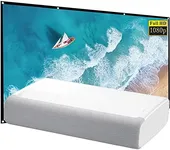


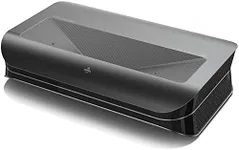
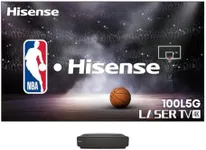

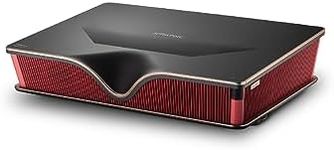
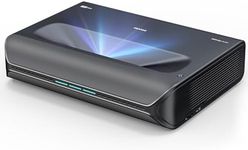
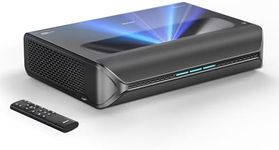

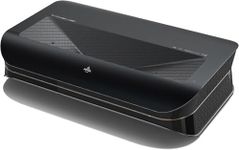
![[Netflix-Licensed/Dolby Audio]Outdoor-Projector 4K with Wifi 6 and Bluetooth,ONOAYO 800ANSI Native 1080P Portable Projector,Built-in Netflix/YouTube/PrimeVideo, Electric Focus Keystone Smart Projector](https://images-proxy.bestreviews.guide/bFxv4ToNzyZ_ZJGun0Yb6Ypvtqg=/0x150/https://m.media-amazon.com/images/I/51kSCALdcqL._AC_CX679_.jpg)
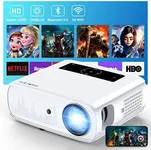

![[Netflix-Licensed/Dolby Audio]Outdoor Projector with Wifi 6 and Bluetooth, iSinbox 1080P Native 700ANSI Portable Movie Projector, Built-in Netflix/YouTube/PrimeVideo, Electric Focus Smart Projector](https://images-proxy.bestreviews.guide/Cte3qzCNs45sbxDyB3wFASbH6mI=/0x150/https://m.media-amazon.com/images/I/51b6wI1PMWL._AC_CX679_.jpg)





